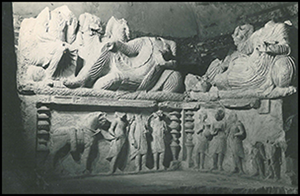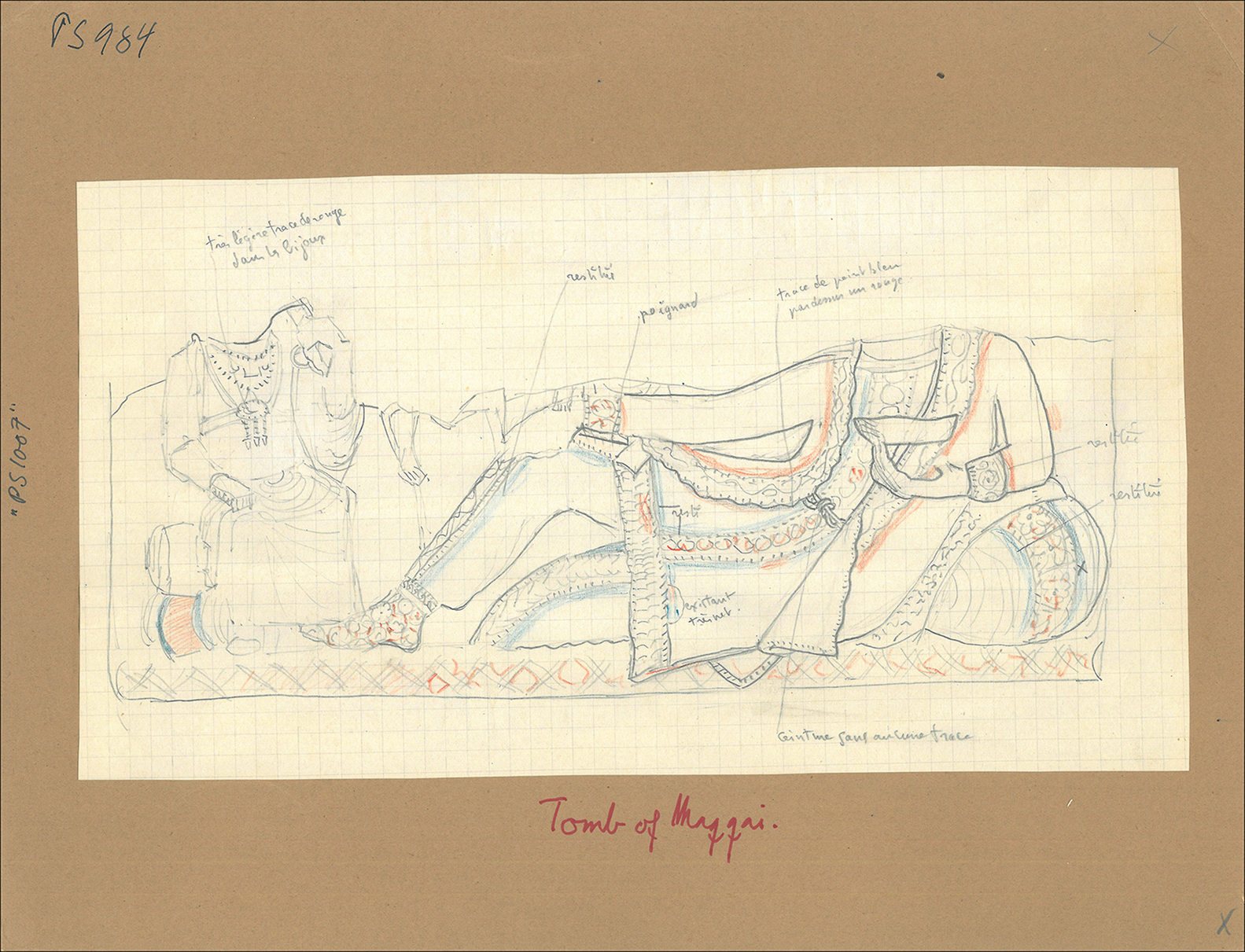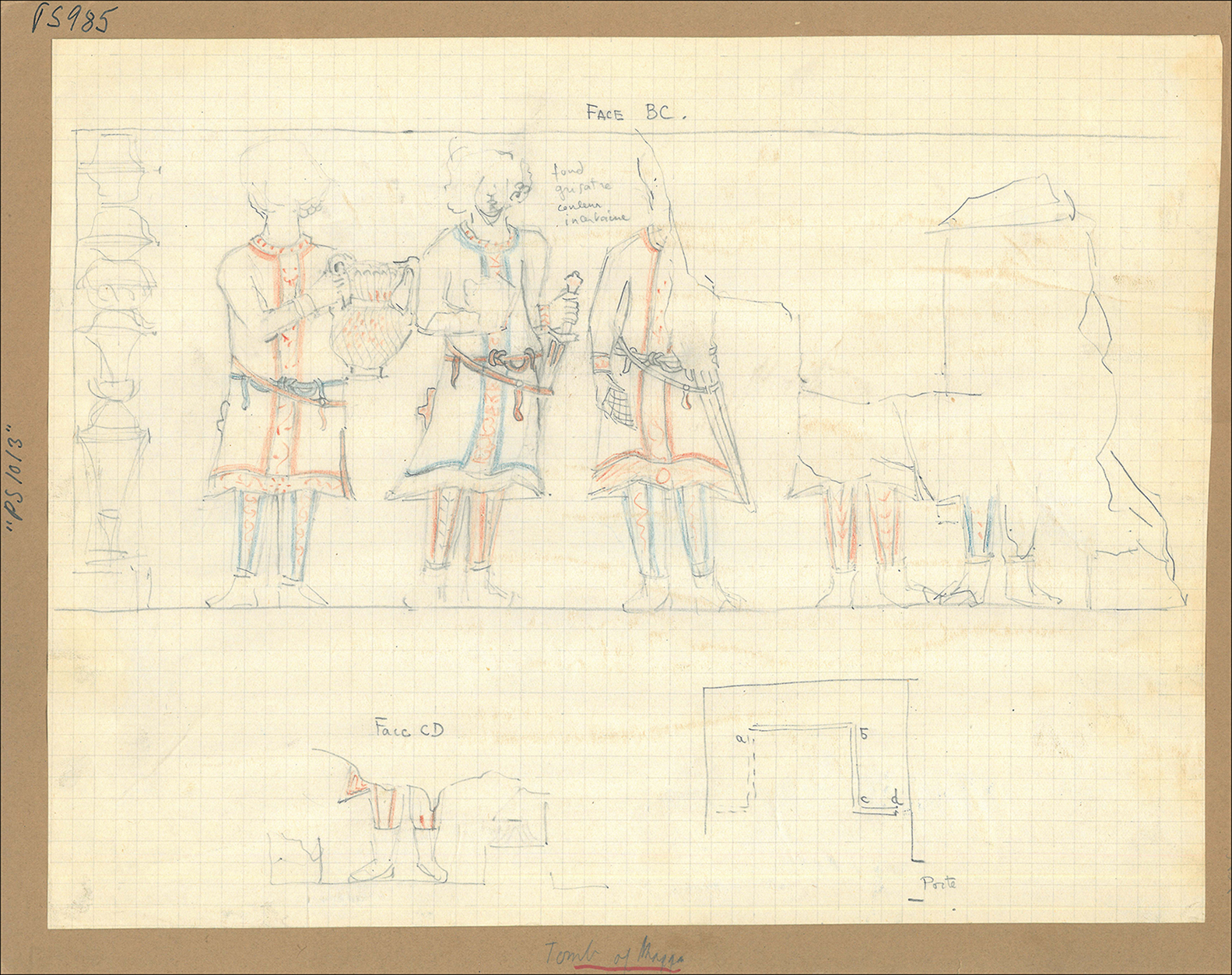Archive Archaeology: Preserving and Sharing Palmyra's Cultural Heritage through Harald Ingholt's Digital Archives. A case study in the accessibility and potential of archives
New publication by Postdoc Amy Miranda and Centre Director Professor Rubina Raja.



The field of archaeology has been slow to adopt the use of archival material in scholarship despite the wealth of information contained in these resources. The project Archive Archaeology: Preserving and Sharing Palmyra’s Cultural Heritage through Harald Ingholt’s Digital Archives (funded by the ALIPH foundation) not only works on Syrian heritage, but also strives to set a best-practice example for the use of archival material in archaeology. A new publication in Antiquity by postdoc Amy Miranda and Centre Director Professor Rubina Raja provides a case study from the Ingholt Archive that outlines such a best-practice scenario:
Miranda, A. & Raja, R. (2021). “Archive Archaeology: Preserving and Sharing Palmyra's Cultural Heritage through Harald Ingholt's Digital Archives. A case study in the accessibility and potential of archives”. Antiquity: 1-9. DOI: http://doi.org/10.15184/aqy.2021.165.
The potential of Harald Ingholt’s digital archive
As COVID-19 broadly prevented scholars from accessing primary source material, digital resources - such as the Ingholt Archive - allowed research to continue. The Ingholt Archive had been digitized within the framework of the Palmyra Portrait Project beginning in 2012, when it was on loan from the Ny Carlsberg Glyptotek, Copenhagen, and is an example of the potential of archives in digital form. As a case study, the authors introduce several archive sheets labelled PS 984 and PS 985 that depict the exedra of Julius Aurelius Maqqaî in the Hypogeum of ʿAtenatan, an underground tomb in Palmyra’s southwest necropolis that Ingholt excavated in 1924. (Fig. 1) The sheets, of which there are twelve, richly illustrate the exedra’s decorative program of funerary sculpture and include Ingholt’s drawings of two sarcophagi. (Figs. 2-3). These drawings provide much information about the sarcophagi as they include annotations in French that describe small details and colour to indicate the polychromy on the sculptures that was still visible in Ingholt’s time. The status of these sarcophagi today is unknown, as they remained in situ and, as such, were vulnerable during the destruction of the ancient city during the Syrian civil war that broke out in 2011.
Studying cultural heritage through digital archives
Archives are critical for the study and preservation of heritage, particularly at-risk heritage. Though archives are not replacements for lost objects, it is essential that scholars document and share their research to preserve and disseminate knowledge. Moreover, the authors underline the importance of cultural heritage resources, a list of which is available through the Archive Archaeology website.
This publication anticipates the forthcoming in print and e-book editions of the archive as The Ingholt Archive: The Palmyrene Material available in 2022 through the Brepols Publishers series Archive Archaeology (Bobou et al. forthcoming). These editions will include a transcription of the archive sheets, commentary, and bibliography. The Ingholt Archive is also available freely as open data in the Journal of Open Archaeology Data (Bobou, Miranda, and Raja 2021). In all its published forms, the Ingholt Archive is the latest in a series of recent publications that share primary source data on Palmyra including Ingholt’s seminal 1928 work, Studies on Palmyrene Sculpture (Bobou et al. 2021), and his excavation diaries (Raja, Steding, and Yon 2021).
Harald Ingholt’s Archive
Harald Ingholt was a Danish archaeologist (1896-1985) with a lifelong dedication to the oasis city of Palmyra in the Syrian Desert. Since his career began in the 1920s, Ingholt collected hundreds of images of Palmyrene funerary sculpture, which are now known as the Ingholt Archive. The archive contains 2.347 sheets, which have become an object of study in their own right in the Archive Archaeology project.
For more about the Archive Archaeology project, see https://projects.au.dk/archivearcheology/
For the Palmyra Portrait Project, see https://projects.au.dk/palmyraportrait/
Bibliography
- Bobou, O., Miranda, A. C. & Raja, R. (2021). “The Ingholt Archive. Data from the project, ‘Archive Archaeology: Preserving and Sharing Palmyra’s Cultural Heritage through Harald Ingholt’s Digital Archives’”. Journal of Open Archaeology Data 9.6: 1-10. DOI: http://doi.org/10.5334/joad.78
- Bobou, O. Miranda, A., Raja, R. & Yon, J.-B. (Forthcoming). The Ingholt Archive: The Palmyrene Material, Archive Archaeology 2, 4 volumes. Turnhout: Brepols.
- Bobou, O., Jensen, J. V., Kristensen, N. B., Raja, R. & Thomsen, R. R. (eds.) (2021). Studies on Palmyrene Sculpture: A Translation of Harald Ingholt’s Studier over Palmyrensk Skulptur, Edited and with Commentary, Studies in Palmyrene Archaeology and History 1, Turnhout: Brepols.
- Raja, R., Steding, J. & Yon, J.-B. (eds.) (2021). Excavating Palmyra. Harald Ingholt’s Excavation Diaries: A Transcript, Translation, and Commentary, Studies in Palmyrene Archaeology and History 4, 2 vols. Turnhout: Brepols.
